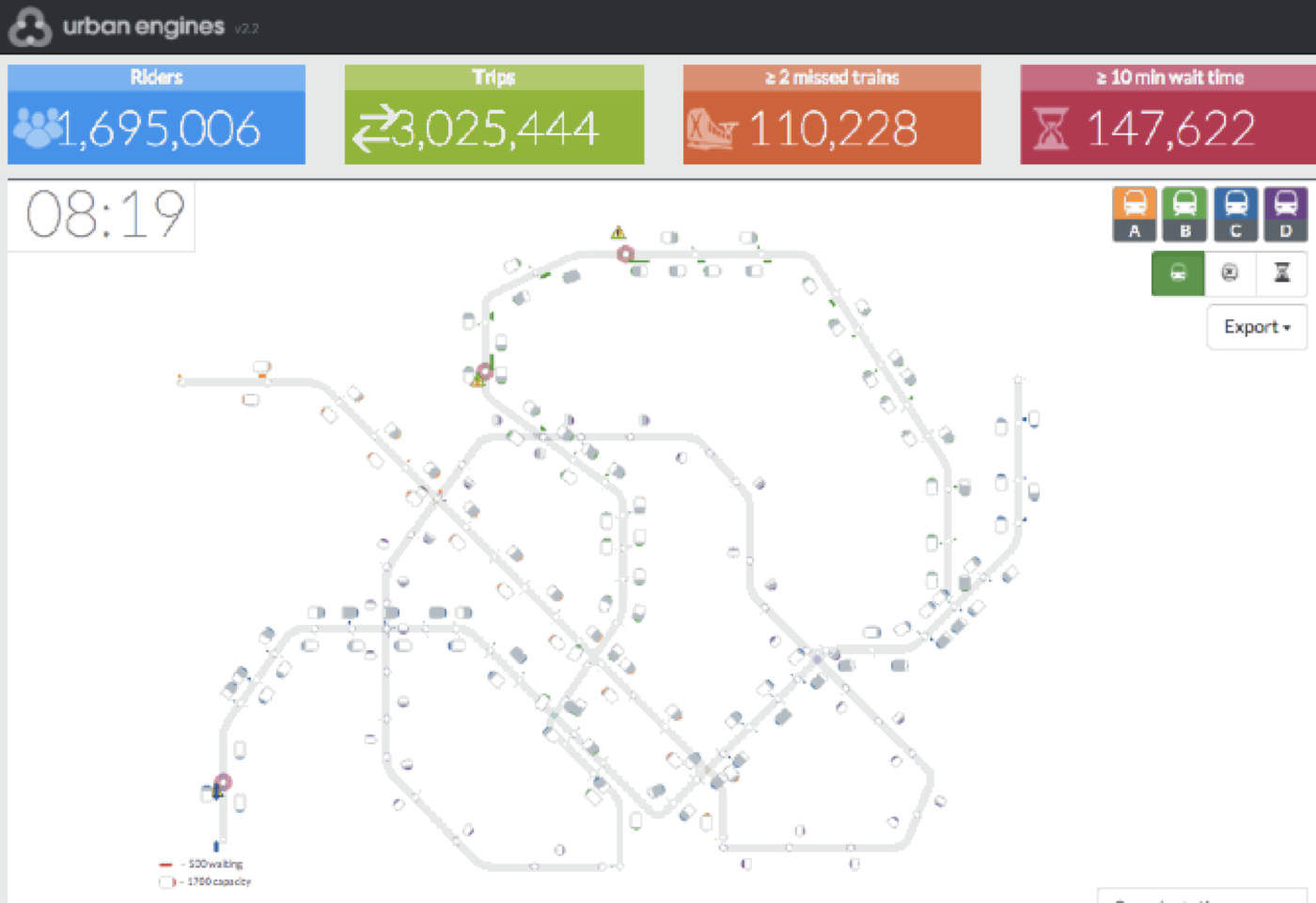
Digital Replica Reconstruction
A picture tells a thousand words: and a fine-grained animation which lets you zoom from a microscopic to a birds-eye view tells a thousand times more. (Or at least that's how it makes users feel.) At Urban Engines, we called this the digital replica.
But when you don't have fine-grained data, what can you do? A case in point: a subway system whose only data feed is tap-in tap-out records, collected for billing purposes. At Urban Engines, we developed and patented a system that uses these billing records to reconstruct not only the train schedule, but also the route choice of each passenger.
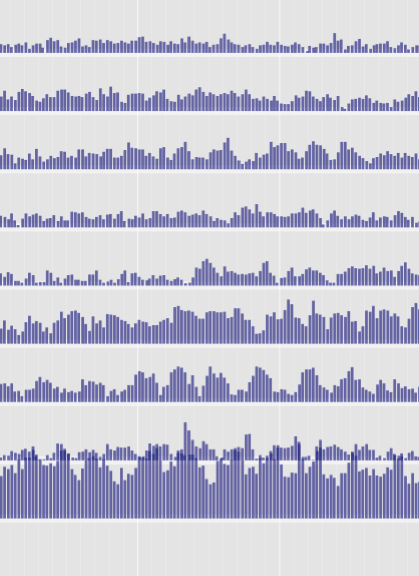
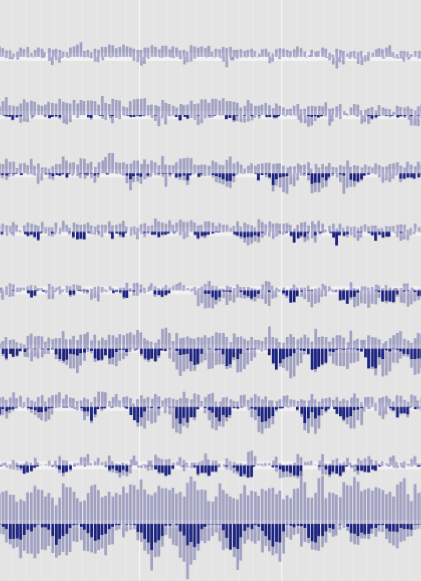
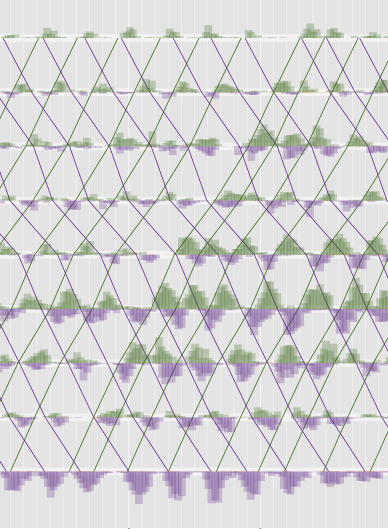
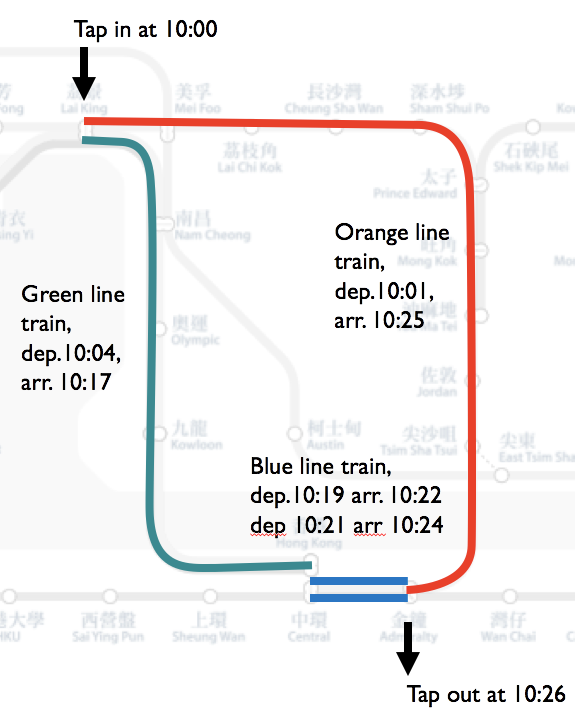
Total passenger volumes at each station (first panel) are uninformative. Instead, we look for waves of tap-outs at each station: these indicate that a train just arrived and disgorged passengers. At busy stations, when there is a continuous flow of tap-outs, you can restrict attention to passengers for whom there is only one obvious route (second panel). Stitch together the waves at adjacent stations, bearing in mind typical travel time, and you deduce train times (third panel). From this we can find all possible train choices a passenger might have made, and figure out how likely each choice is based on typical walking times between surface and platform at each station.